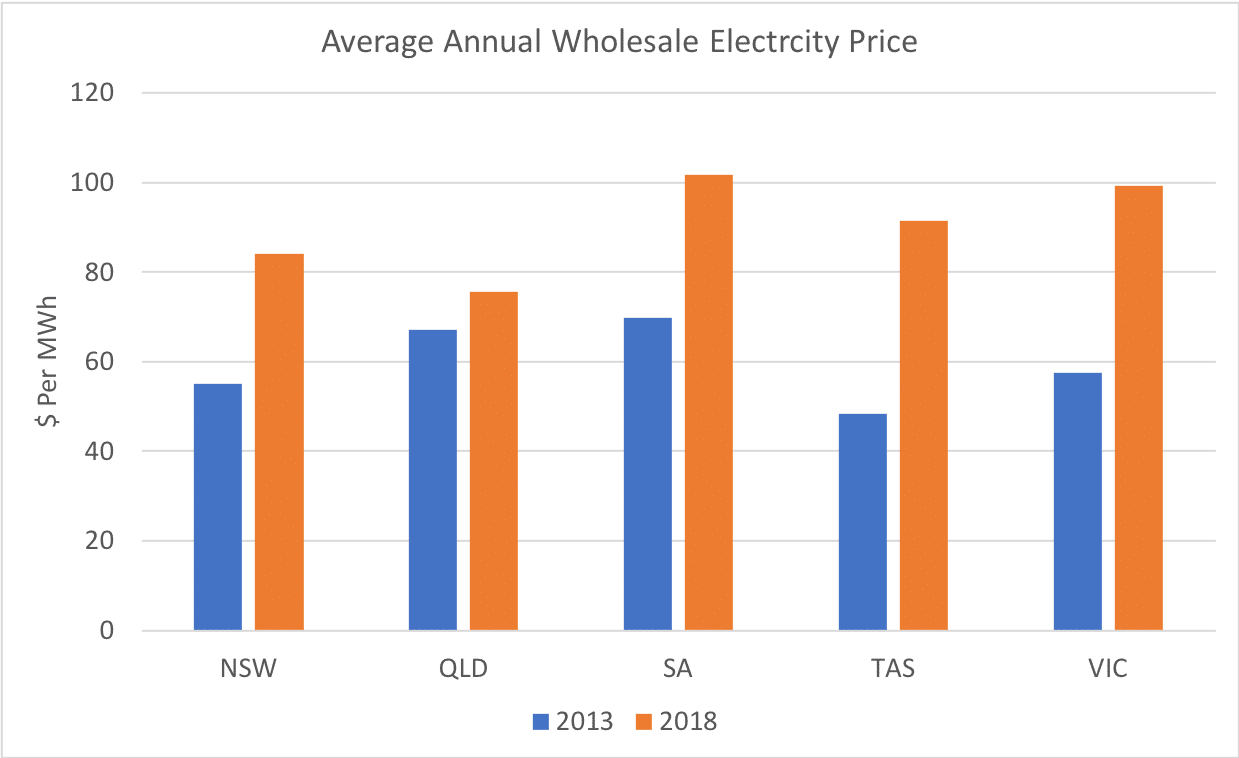Investor News
International Energy Agency calls for CCS funding
The International Energy Agency (IEA) has published its 5-yearly report on the state of world energy - link.
And this week, the head of the IEA, Dr Fatih Birol, called on Australia to drive down electricity prices and secure supply.
A lot has happened in the past 5 years. Energy Policy has pushed up the average annual wholesale electricity prices faster than inflation.

Reliability has dropped, with numerous network failures (despite a decade of 'gold plating' activity) and tightening capacity driven by increased penetration of intermittent wind power in the face of reduced dispatchable capacity via the closure of coal-fired power in South Australia and Victoria.
The article ($) by The Australians National Political Editor Simon Benson highlighted the stance of the IEA:
- Provide tax subsidies for carbon-capture technology to drive down electricity prices and secure supply
- Lift State bans on gas exploration
- Strong endorsement of the Turnbull government's National Energy Guarantee (NEG) model to restore a balance between reliability, affordability and reduction of CO2 intensity
Most people now understand the trilemma between reliability, affordability and CO2 intensity.

The IEA recommends incentives for CCS to keep coal in the mix to provide reliable electricity. But, as the trilemma shows, when emissions from coal go down (due to CCS), and reliability remains high, the cost invariably increases.
The article acknowledges that the cost of CCS has come down in the US and Canada. That's to be expected with new processes. But what does that mean for Australia, and in particular, Victoria's brown coal power stations?
In a recent newswire (link) we shone a light on our own Co-operative Research Centre for CO2 (CO2CRC). They modelled a best-case scenario for brown coal power stations of $70 per tonne of CO2. Given the remaining capacity of brown coal in Victoria of some 4,600MW, CO2 emissions will be around 46 million tonnes per year. At a cost of $75 per tonne, that's an additional $3.2 billion in costs per year, adding another $90 - $100 to the cost of each megawatt-hour in Victoria's case.
This presents an opportunity if the government's proposed NEG is really technology agnostic.
We know that CCS will add costs. It's cheaper than solar yet more expensive than wind. But wind generation is less reliable, so there's a cost associated with storage or gas backup.
The answer to making CCS more affordable is to capture and store less CO2. How? By adding our Coldry process as a pre-combustion CO2 mitigation solution to existing power stations, the post-combustion CCS solution has less to capture and store. Coldry also creates other efficiencies, such as reducing or eliminating the need to draw water from the local river systems for cooling.
Taking it a step further, a new-build high-efficiency, low-emission (HELE) power station in Victoria, integrated with Coldry at the front end and CCS at the back end, would likely be the cheapest, most efficient approach to maintaining reliability using brown coal.
Read more...
Tax breaks call to keep coal firing
The Australian | 15 February 2018 | Simon Benson
The head of the International Energy Agency has called on Australia to follow the US lead and provide tax subsidies for carbon-capture technology to drive down electricity prices and secure supply.
Source ($): Tax breaks call to keep coal firing